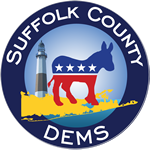We cover a lot of issues and controversies here at The Sag Harbor Express. But in recent months, one particular topic has been registering on our radar screen time and time again — and it’s something that has us seriously concerned.
It’s the issue of water quality in the bays and estuaries in Sag Harbor and across the East End. And while the details and specifics may ebb and flow with each story, we’re noticing an overall theme here — and that’s the increasing amount of degradation being experienced by the East End’s most precious resource — our waters.
There has been a pattern. In May, we were dealing with a red tide algae bloom in Sag Harbor Cove, which produced a neurotoxin known as saxitoxin. Found in shellfish, the presence of the bloom closed the fishery for quite a while because it can be deadly to humans. This is the second consecutive year the neurotoxin has bloomed in our waters.
We also experienced a rust tide in August. Though not toxic to humans, it does harm finfish and shellfish, which are already depleted in local waters. It was first spotted in Shinnecock Bay and western Peconic Bay but soon spread everywhere. Driving past Long Beach in Noyac, the bands of algae in the water are visible from the road.
This summer we also heard about Concerned Citizens of Montauk taking water quality issues into their own hands by setting up a water-testing program to monitor for elevated bacteria levels. We’ve also talked to experts who are sounding an alarm over the ever increasing amounts of pollution and nutrients entering the bay through road run off, aging septic systems and the use of fertilizer and chemicals on waterfront parcels.
Meanwhile, Suffolk County Legislator Jay Schneiderman has introduced a bill to restrict the use of methoprene in estuaries. This biochemical pesticide is toxic not only to the mosquitoes it targets, but the estuarine invertebrates it doesn’t, like crabs and lobsters. Connecticut limits its use, as do many places in Rhode Island. Schneiderman reports that lobster population in Long Island sound fell from 3.7 million pounds to 142,000 pounds in the last 15 years and he attributes it largely to methoprene.
Then just last week, we experienced a 6” rainfall in the course of five hours — an amount of rainfall that virtually no drainage system is designed to handle but one that might just be an example of our “new normal.”
All this seems to be telling us something — and it’s not good.
The issue of water quality is one that is far larger than the specific events in Sag Harbor Cove, Shinnecock Bay or Lake Montauk. Which means to stop its decline any plan to tackle these issues must be comprehensive. Small efforts, while well meaning and perhaps locally successful, are not enough to save the estuary.
And at this point, we feel it is in need of saving — with time quickly running out.
This week State Assemblyman Fred W. Thiele, Jr. and State Senator Kenneth P. LaValle began urging East End towns, villages and nonprofits to band together to develop regionally supported projects to restore the Peconic Estuary.
And there’s new money out there to do it — specifically an additional $2 million in the DEC’s Water Quality Improvement Project (WQIP). This extra money is available from unspent, recouped funds from the $1.75 billion Clean Water/Clean Air Bond Act of 1996 and we should take advantage of it. This money also comes on top of more than $30 million, which is also available through the WQIP program statewide.
As Thiele and LaValle noted, while progress and improvements to the Peconic Estuary have been made since brown tide swept in and devastated our acclaimed scallop industry in 1985, new threats have arisen — many of them coming from waterfront development and eroded setback standards which were designed to keep nutrients out of the bays.
So we’ve gotten our marching orders — now we urge individuals, municipalities and non-profits concerned about water quality around the East End to organize, get creative and devise some well-considered strategies for dealing with this issue in the comprehensive way in which it needs to be addressed.
There’s no telling how much time we have left to save this resource, so let’s get busy.
For information and application guidance on Round 11 of the WQIP and the special $2 million pot for the Peconic Estuary visit dec.ny.gov/pubs/4774.html. Deadline for submission is November 8.
